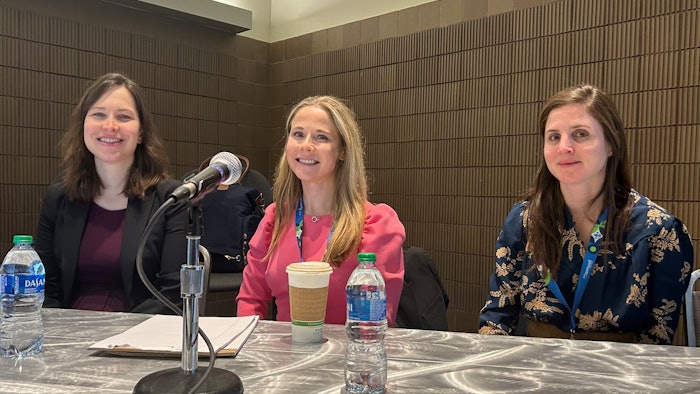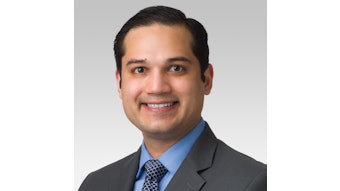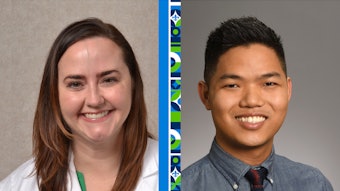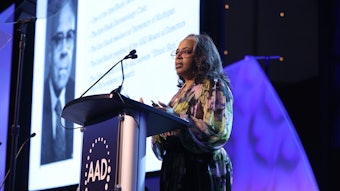Surgery is not the only option for skin cancers
Treatment depends on the type of cancer and patient.

There are many ways to treat skin cancer. Topical medications, cryotherapy, photodynamic therapy, intralesional treatment, and systemic approaches all may be appropriate for many patients. For some patients, surgery may be the least-preferred option.
The concept was explored in depth during the March 20 session, “U088 – When to Put Down the Scalpel: Non-Surgical Therapies for Skin Cancer.”
“For eruptive squamous atypia, surgery may actually worsen the problem,” said session director Rebecca I. Hartman, MD, MPH, FAAD, an associate chief of dermatology at the Veterans Administration Boston Healthcare System and assistant professor of dermatology at Harvard Medical School. “In these cases, intralesional 5FU as well as cryosurgery may be beneficial.”
Although surgery is often the primary treatment for non-melanoma skin cancers, Dr. Hartman said being able to offer several effective alternative treatments can both benefit patients and improve care in line with patient goals. Treatment choices start with the cancer itself.
Superficial versus advanced
“When thinking about appropriate management of keratinocyte carcinomas, the first consideration is defining what type of skin cancer is being treated,” said Emily S. Ruiz, MD, FAAD, academic director of the Mohs and Dermatologic Surgery Center and director of the High-Risk Skin Cancer Clinic at Dana-Farber Brigham Cancer Center in Boston. Dr. Ruiz is also assistant professor of dermatology at Harvard Medical School.
“I consider non-surgical modalities most useful at the two extremes: superficial skin cancers and advanced skin cancers,” she said. “Patient selection does play a role, but that is secondary once it is determined whether or not the non-surgical treatment is a reasonable option.”
Dr. Ruiz focused on systemic treatments for keratinocytic carcinomas. Systemic options such as acitretin, capecitabine, hedgehog inhibitors, and immunotherapy may be particularly useful for patients with numerous localized non-melanoma skin cancers that are prohibitive of surgery, but there are multiple non-surgical therapies available that allow dermatologists to tailor treatment to both patient and cancer.
Topical medications such as 5-fluorouracil, 5-fluorouracil + calcipotriene, and imiquimod may be used once or twice daily for several weeks for superficial basal cell carcinoma and squamous cell carcinoma in situ, Dr. Hartman said. Reported efficacy ranges from 48% to 85%.
Cryotherapy can be used for low-risk lesions such as superficial basal cell carcinoma and squamous cell carcinoma in situ. Two freeze-thaw cycles with a total thaw time of 90 seconds have a reported efficacy of 68-86%.
Abigail Baird Waldman, MD, FAAD, who also presented at the session, said that she prefers topical treatments to surgery for low-risk skin cancers in certain high-risk locations, such as the nose, to avoid the risk of undesirable cosmetic outcomes with surgery. Surgery is preferred in some locations, like near the eye, due to difficulty applying a topical therapy.
Photodynamic therapy and other options
Photodynamic therapy is also an option for low-risk lesions such as superficial basal cell carcinoma and squamous cell carcinoma in situ. Depending on the photosensitizer used, studies show efficacy of 70-90%.
Intralesional application of intralesional 5-FU and methotrexate can be used for squamous cell carcinoma. Intralesional treatment is particularly useful for patients with multiple recurring SCCs after surgery such as eruptive squamous atypia.
Active surveillance is another alternative. Surveillance can reduce patient discomfort and the potential complications of surgery and other treatments, Dr. Hartman said. But there is always the risk that the tumor may grow, a risk that can be mitigated by limiting the approach to low-risk tumors and balancing potential tumor progression against the patient’s life expectancy.
“Non-surgical modalities are incredibly effective for the right tumor,” Dr. Ruiz said. “Patients with multiple skin cancers in particular benefit from a reduced number of surgeries.”
Visit AAD DermWorld Meeting News Central for more articles.











